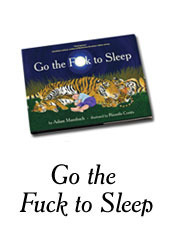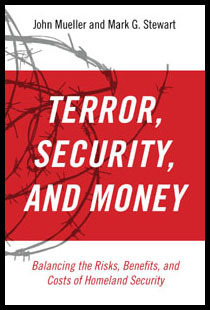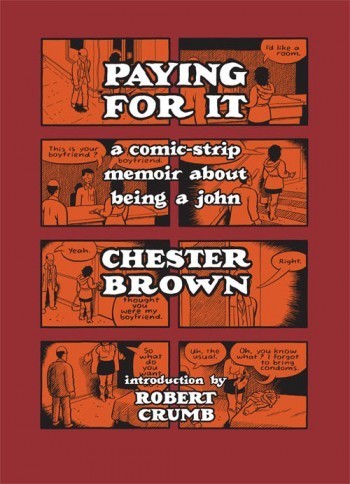Robert R. Arthur's Blog
July 16, 2013
Mind Your Business!

Cartoon Text
As Americans and the world acquiesce to warrantless blanket surveillance by the NSA, it is worth recalling the spirit of another era. The first currency of the USA was designed by Benjamin Franklin and was inscribed, not with “in God we trust,” but with “mind your business.”
Bonus
To read about the terrorism threat that is being used to justify blanket surveillance go to, “The Bathtub Threat: Terrorists and Danger.” To read about how effective counter-terrorism measures have been in an arena that is subject to public scrutiny, and not hidden by secrecy, go to, “How the TSA Kills Us … Literally.”
A brief background of the Fugio cent may be found at Wikipedia, and a more detailed history may be found here.

June 27, 2013
The Bathtub Threat: Terrorists and Danger

Cartoon Text
What is Most Dangerous to Americans?
a. terrorists
b. deer
c. bathtubs
d. home appliances
Hazard – Annual Fatality Risk (3)
Bathtub Drownings – 1 in 950,000
Home Appliances – 1 in 1,500,000
Deer Accidents – 1 in 2,000,000
Terrorism (1970-2007) – 1 in 3,500,000
Would you throw your civil liberties and a trillion tax dollars away to be slightly safer from bathtubs? (1) The government and media fearmonger for votes, viewers, and money. Replace hype with cost-benefit and risk analysis.
Bonus
An example of media sensationalism was this comment by ABC’s Charles Gibson on the fifth anniversary of 9/11:
Putting your child on a school bus or driving across a bridge or just going to the mall—each of these things is a small act of courage—and peril is a part of everyday life. (4)
A rare example of a politician being level-headed about the threat of terrorism was in 2007 when NYC Mayor Michael Bloomberg told citizens fretting over terrorism to “get a life” and that they have a better chance of being struck by lightning than by terrorism. (2)
To learn more about the colossal waste of money that the TSA has been read, “How the TSA Kills Us … Literally”.
To learn more about the fantastic absence of rational analysis in America’s continuing response to 9/11, read the book by John Mueller and Mark Stewart, Terror, Security, and Money: Balancing the Risks, Benefits, and Costs of Homeland Security (2011).
Sources
1. Ronald Bailey, “How Scared of Terrorism Should You Be?” Reason.com, 6 Sep. 2011. LINK
2. Sewell Chan, “Buzz Over Mayor’s ‘Get a Life’ Remark,” NYTimes.com, 6 June 2007. LINK
3. John Mueller and Mark Stewart, “Hardly Existential: Thinking Rationally about Terrorism,” ForeignAffairs.com, 2 Apr. 2010. LINK
4. John Mueller and Mark Stewart, “Terror, Security, and Money: Balancing the Risks, Benefits, and Costs of Homeland Security,” 1 Apr. 2011. LINK (PDF)

June 25, 2013
My “Defense of Meth” Article Runs at AlterNet

AlterNet published my article under the title, “Nazis Used Meth? 5 Things to Know About One of the World’s Favorite Stimulants.” In it I expose the sensationalism and fear-mongering common in methamphetamine coverage by critiquing a recent Huffington Post article, “Nazis Took ‘Meth’ Pills to Stay Alert, Boost Endurance During World War II, Letters Reveal.”
Thanks to Kristen Gwynne (@kristengwynne) at AlterNet.

June 20, 2013
How the TSA Kills Us … Literally

Cartoon Text
The billions spent on creating and funding the TSA since 9/11 are a joke. Flying is safer post-9/11 for only two reasons. Passengers now know to fight back as they belatedly did on Flight 93, and cockpit doors are now reinforced. (5)
There are two terrorist types. The incompetent moron who would have been caught before 9/11 and the much-rarer trained and financed operative. As the TSA’s embarrassing testing results have shown, both types can still get through. (6)
TSA’s inconvenience has pushed many to drive instead of fly. Because driving is so much more dangerous than flying, researchers have suggested that in the five years after 9/11 over 100 people died due to substituting driving for flying because of security hassles. (2, 1)
Cost-benefit and risk analysis are comically absent in security policy. (4) Statistically, bathtubs and deer are more dangerous to Americans than terrorism. (3) Terrorism is deadly but so is billion-dollar knee-jerk political window dressing, a.k.a. security theater.
Bonus
An excellent short article from 2011 on terrorism risk is “How Scared of Terrorism Should You Be?” by Ronald Bailey at Reason.com.
Disclaimer
Hours after drawing the above cartoon I saw that the daughter of my contact at Boing Boing, Mark Frauenfelder, recently had a regrettable experience with TSA. (This can be read about here.) This cartoon should not be interpreted as a juvenile attempt at retaliation. I have no reason to doubt that the vast majority of TSA workers are decent individuals who are trying to make flying safer. My criticism is focused on the politicians and bureaucrats who, in the words of Bill Clinton’s counterterrorism coordinator Richard Clarke, do not have the political courage to avoid “procedures that inconvenience the public more than they do the terrorists.” (4)
Sources
1. Garrick Blalock, Vrinda Kadiyali, and Daniel Simon, “The Impact of 9/11 on Road Fatalities: The Other Lives Lost to Terrorism,” Applied Economics, 2009, 41(14). LINK
2. Charles Kenny, “Airport Security is Killing Us,” BusinessWeek.com, 18 Nov. 2012. LINK
3. John Mueller and Mark Stewart, “Hardly Existential: Thinking Rationally about Terrorism,” ForeignAffairs.com, 2 Apr. 2010. LINK
4. John Mueller and Mark Stewart, “Terror, Security, and Money: Balancing the Risks, Benefits, and Costs of Homeland Security,” 1 Apr. 2011. LINK (PDF)
5. Bruce Schneier, “Economist Debates: Airport Security,” Economist.com, 20 Mar. 2012. LINK
6. “TSA Misses Guns, Bombs in Tests,” JudicialWatch.org, 20 Dec. 2010. LINK

June 13, 2013
Go the F*ck Free: Best-Selling Illustrator Makes Jury Nullification Fun
An American juror has the power to deem a defendant “not guilty” in a criminal trial even when the evidence of guilt is overwhelming. The juror can, in effect, nullify a law believed to be either unjust or unjustly applied. This legal doctrine is known as jury nullification. Drug-war opponents and sex-work activists should familiarize themselves with this aspect of jurisprudence, and thanks to Ricardo Cortés jury nullification is now colorfully accessible.
Cortés is the illustrator of the New York Times bestselling children’s book, Go the F*ck to Sleep (2011).* He also wrote and illustrated the children’s book about marijuana, It’s Just a Plant (2005), and A Secret History of Coffee, Coca & Cola (2012). His illustrated book on jury nullification is called Jury Independence Illustrated (2011) and the ebook can be viewed for free here.


Jury nullification has a rich history dating back to before the Revolutionary War. In colonial times it was used to free people prosecuted for criticizing the government. During the 19th century, juries as far south as Georgia would refuse to convict people who aided escaped slaves. During the 20th century, juries used it to free alcohol criminals under prohibition, artists charged under obscenity laws, and homosexuals charged under sodomy laws. (Critics point out that racist juries have also used jury nullification to free persecutors of minorities. A recent case where this may have occurred is here.)



Although jury nullification is explicitly authorized in three state constitutions, many jurisdictions bar judges and lawyers from telling jurors about it. California has gone so far as to rule that a juror who openly argues for jury nullification can be discharged. In contrast, the “Live Free or Die” state of New Hampshire made it a state law in 2012 that judges must allow defense attorneys to inform jurors of their authority to nullify. (Read more about California’s ruling here, and New Hampshire’s law here.) Due to jurisdictions like California, the Fully Informed Jury Association (FIJA) advises:
We caution jurors NOT to lobby their fellow jurors obviously toward nullification during deliberations! It has been established in court precedent that judges may remove jurors, even during deliberations, if the judge becomes aware that they are considering jury nullification in coming to a verdict. If a single fully informed juror is removed from the jury because he or she made his or her intentions known by attempting to lobby other jurors, the defendant may be left without anyone in his or her corner during deliberations. It is much better for the defendant if that fully informed juror simply hangs the jury. A hung jury is always better than a conviction, and the prosecutor will have to think twice about whether or not it is even worth it to retry the case. (2)
Prominent advocates of jury nullification for drug cases include the writers of HBO’s Baltimore drama The Wire, San Diego Mayor Bob Filner, and the George Washington Law School professor Paul Butler. Their statements can be read here, here, and here respectively.
For more detailed information on how to ethically get seated on a jury in order to nullify the prosecutions of non-violent drug criminals read “A Guide to Surviving as a Juror” by the Texas attorney, Clay Conrad. Conrad is the author of Jury Nullification: The Evolution of a Doctrine (1999).
* Samuel L. Jackson’s reading of the book went viral in 2011. It can be seen here.
Sources
1. Clay Conrad, “A Guide to Surviving as a Juror,” CounterPunch.com, 5 Feb. 2003. LINK
2. “Reminder: Juries Can Nullify Marijuana Charges If They Find Them Unjust,” FIJA.org, 1 Apr. 2013. LINK

May 23, 2013
Now They’re Mad? Media Hypocrisy in Rosen Case

*** Outside of the sources, text below is same as in cartoon. ***
In 2013 elite American media outlets are in a fury about the Obama DOJ’s criminal investigation of James Rosen of Fox News under the Espionage Act of 1917. (3)
In contrast, the criminal pursuit of Julian Assange of WikiLeaks for the same “crime” led much of the US journalistic community to shun him. (4, 3)
In 2010 the NY Times Executive Editor said that Assange was not a “kindred spirit” and that his prosecution would not necessarily be an attack on press freedom. (1)
The Espionage Act of 1917 was first used against non-government-employees who had received and disseminated classified information by the W. Bush DOJ. (2)
Sources
1. Jeff Bercovici, “NY Times Editor: WikiLeaks Is ‘Not My Kind of News Organization,’” Forbes.com, 16 Dec. 2010. LINK
2. Glenn Greenwald, “Attempts to Prosecute WikiLeaks Endanger Press Freedoms,” Salon.com, 14 Dec. 2010. LINK
3. Rebecca Shapiro and Jack Mirkinson, “Obama Administration’s Media Surveillance Unleashes Wave of Condemnation,” HuffingtonPost.com, 22 May 2013. LINK
4. Nancy Youssef, “In WikiLeaks Fight, US Journalists Take a Pass,” McClatchyDC.com, 9 Jan. 2011. LINK

March 7, 2013
Chester Brown Is Awesome

The great graphic novelist, Chester Brown, was kind enough to write a blurb for my book, You Will Die: The Burden of Modern Taboos:
We think we understand our society’s taboos, I certainly thought I did. But reading Robert Arthur’s fascinating, powerful book showed me how little I knew about the subject. You Will Die challenged me in the way that really good books do.
He also gave me a copy of his celebrated biography of the Canadian revolutionary, Louis Riel, with a signed drawing on its title page (pictured above). As the kids used to say back in the 1940s, it blew my wig.
Brown’s latest best-selling graphic novel, Paying For It (2011), details his life as a patron of sex workers. His intimate description of the practice is a welcome rejoinder to the media’s portrayal of all johns as callous misogynists.

January 2, 2013
“You Will Die” Release, History, and Thank You
Yesterday the Feral House version of You Will Die: The Burden of Modern Taboos was released in both paperback and e-edition. The Feral House version is revised, updated, and has a new concluding chapter on the taboo of death. My illustrations from the self-published versions (Suburra Publishing) were removed and I begrudgingly admit this gives it a more professional appearance.
For those people who have supported me through this journey, I would like to thank you and share a little bit about the odyssey. I began writing this book about ten years ago when I was living in an abandoned schoolhouse in south central Pennsylvania after graduating from NYU Law. It was about five years later that I began self-publishing the first version. It was initially hand-bound. I used thin black cardboard from Ollie’s Bargain Outlet for the cover. For the second edition, I graduated to binding the book with covers made from cereal boxes.
An early fan of my book was a woman from Toronto. After e-mail correspondence and one short visit, I moved in with her on the corner of Bloor and Concord. I lived a bohemian existence there for about a year. Toronto is a wonderfully open-minded city. Evidence of this is that I received no complaints for the early promotional materials I posted in our window facing Bloor traffic.

Seekers Books in Toronto’s Annex was the first bookstore to carry You Will Die and one of its employees was the first person to request my autograph. Below is an old picture of a cereal-box You Will Die sitting for sale at Seekers.

I never expected much out of You Will Die. I thought it would be a short experiment. As I wrote in the introduction to my self-published version back in 2006, “If this book is a failure, I will try to conform to society, find a wife, get a real job, and settle down.”* The problem was that every time I was about to label it a failure and move on, I would catch a break. Some of the bigger breaks included winning the Montaigne Medal, having some blog posts/cartoons go viral, finding an agent (Jon Sternfeld), and finally finding a publisher.
Due to its nature, few people will be open-minded enough to read my writing, much less appreciate it. For those who have done both, I give my heartfelt thanks. You Will Die will probably never be a financial success, but one of the reasons I do not regret devoting such a large portion of my life to it is because of the fascinating people with whom it has brought me contact. In the “Death” chapter I wrote:
Life is absurd. No meaning is provided for you. It is marvelously bizarre, random, and comedic. You are brought here to wander and coexist for a brief moment, and then you are gone just as inexplicably and suddenly as you arrived. Many people never ponder death and merely accept the beliefs of those around them. They get pulled into the temporal concerns of the ego and the routine of robotic conformity.**
We will both die, so thanks for pondering life with me while we are here. If you are ever in DC and want to meet for a beverage containing the drug of either caffeine or alcohol, shoot me an e-mail.
Some You Will Die trivia:
Suburra, the name of my publishing company and this website, comes from the Suburra, a neighborhood in Rome. In antiquity it was Rome’s red-light district.
The shaky font used for titles in the early versions was taken from my grandfather’s handwriting on holiday cards he had sent to me in his early 90s. He is still alive.
When I first received notice You Will Die won the 2008 Montaigne Medal for most thought-provoking title, I took the word “title” literally and thought it was a “sorry, you didn’t win” award for having a clever name. It was not until a year or so later that I noticed other publications recognizing the accolade. At that point, I realized my mistake and started publicizing the award on my website as well as wearing the medal around the house.
My cousin is an independent animator who was nominated for an Academy Award for one of his short films.
My favorite comment on Narco Polo was the following by Moses in 2011, “how about updating your website you lazy dick head?”
* Yesterday, I proposed to my girlfriend in the fountain at DC’s Dupont Circle. She said yes.
** Some of this wording was borrowed from a popular philosophy book. Kudos to anyone who can name it below. In You Will Die proper credit was given.

December 29, 2012
Ten Ways Social Taboos About Sex, Drugs and Death Scare Us from Learning the Truth
In coordination with the January 1st release of the Feral House version of You Will Die: The Burden of Modern Taboos, AlterNet published my article, “Ten Ways Social Taboos About Sex, Drugs and Death Scare Us from Learning the Truth.”
The ten harmful misconceptions caused by taboos covered in the article are:
1. Taboo: Drugs—Misconception: Jesus was against drug use.
2. Taboo: Sex—Misconception: Few women choose to be sex workers.
3. Taboo: Drugs—Misconception: Drugs do not aid creativity.
4. Taboo: Excrement—Misconception: We go to the bathroom properly.
5. Taboo: Drugs—Misconception: Illicit drugs are exceptionally deadly.
6. Taboo: Sex—Misconception: Jesus was against non-marital sex.
7. Taboo: Nasal Mucus—Misconception: Nose-picking is bizarre.
8. Taboo: Sex—Misconception: Homosexuality is a choice.
9. Taboo: Drugs—Misconception: Drug dealers cause drug use.
10. Taboo: Death—Misconception: Modern medicine can save us.
Thanks to Kristen Gwynne (@kristengwynne) at AlterNet for running this unconventional piece.

October 30, 2012
The Evil of Sex-Trafficking Hype

In America, our government locks up exponentially more prostitutes than sex traffickers do. Trafficked sex slaves do exist, but in the United States they constitute a microscopic percentage of sex workers. From 2000–2007, 1,362 victims of human trafficking were identified by the federal government in the United States. (4) (This number included those trafficked for non-sexual labor as well.*) In that same time period, there were over half a million prostitution arrests. (3) This means that in America for every identified sex-trafficking victim there are hundreds, if not thousands, of willing sex workers arrested by law enforcement.
Bolstered by anti-sex feminists and fundamentalist Christians, American politicians have fought the legalization of prostitution under the guise of preventing sex trafficking. The assertion that legalizing sex work promotes sex trafficking is counter-intuitive and there is “absolutely no evidence” to support it.** (8)
The false nexus between legalization and trafficking was exposed by the British. In the United Kingdom, where prostitution is legal, sensationalism about the trafficking of sex slaves led to a massive crackdown using every police force in the country. In 2007 and 2008, 822 brothels, flats, and massage parlors were raided. They did not find a single person who had forced anybody into prostitution. (2)
Sex trafficking is a heinous crime that should be combated, but sensationalizing the problem in order to persecute all sex workers is just as heinous. Imprisoning sex workers to “help” them is cruelty masquerading as morality.
Driving prostitution underground imperils the safety of all sex workers. Criminalization is what allows them to be abused by traffickers, clients, pimps, and the police. (7) Prosecuting sex workers and branding them with permanent criminal records destroys their lives. Sex trafficking is evil, but so is criminalization.
(For more Narco Polo postings and cartoons on sex work go here.)
* It is likely that sexual slavery accounted for only a small minority of this number. In a 2005 Nation article, Suzanne Tomatore, an attorney who heads the Immigrant Women and Children Project of the Association of the Bar of the City of New York was quoted as saying that the “vast majority” of her clients were trafficked into domestic work. (6)
** Studies of the “Swedish model” that make this claim have been thoroughly discredited. See Maggie McNeill’s synopsis of an Australian governmental analysis or Dr. Laura Agustín’s writings on the topic. (5, 1)
Meet Some Sex Workers
To hear the voices of some proud, intelligent, and fabulous sex workers check out the blogs The Honest Courtesan and Bound, Not Gagged. An entertaining and witty Twitter feed of an active sex worker is Nun Ya’s @Ishfery.
This post is dedicated to the sex-worker rights activist, Robyn Few, who passed away last month. She patiently answered my queries years ago. You can learn more about her life here and read a New York Times article on her activism here.

Sources
1. Laura Agustín, “Trying to Prove Swedish Law Reduces Trafficking: Garbage In, Garbage Out,” theLocal.se, 16 Aug. 2010. LINK
2. Nick Davies, “Inquiry Fails to Find Single Trafficker Who Forced Anybody Into Prostitution,” Guardian, 19 Oct. 2009. LINK
3. There were 653,500 prostitution related arrests from 2000–2007. “Easy Access to FBI Arrest Statistics 1994–2008,” OJJDP.gov, 2011, ret. 7 Apr. 2012.
4. Jerry Markon, “Human Trafficking Evokes Outrage, Little Evidence,” WashingtonPost.com, 23 Sep. 2007. LINK
5. Maggie McNeill, “Down Under,” The Honest Courtesan (blog), 9 June 2011. LINK
6. Debbie Nathan, “Oversexed,” TheNation.com, 2005 Aug. 29, p. 3. LINK
7. An Illinois study found that police accounted for 30% of all reported abuse, compared to 4% arising from pimps. Noy Thrupkaew, “A Misguided Moral Crusade,” NYTimes.com, 22 Sep. 2012. LINK
8. Ronald Weitzer, “Moral Crusade Against Prostitution,” Society, Mar./Apr. 2006, p. 37.









